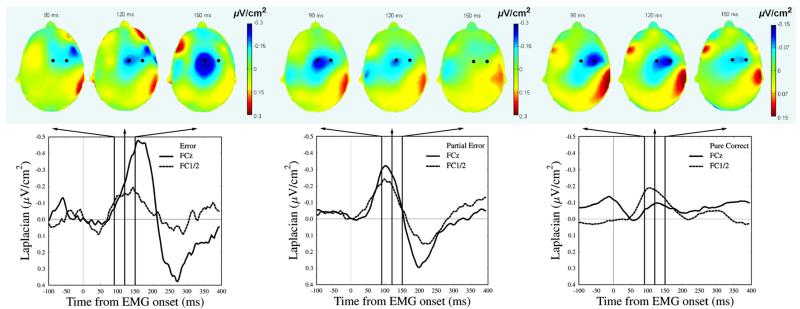Fig. 9.
Topographies and time courses of the medial and lateral activities, for the three types of trials (error, partial errors and correct trials, from left to right, respectively). The enhanced lateralization on correct comes from two interacting factors: first, on correct, the amplitude of the lateralized activity being closer (actually even larger) than the medial one, it largely contributes to the topography. The larger amplitudes for the medial activity on partial errors and errors, while the lateralized one does not change, reduces the impression of lateralization, although the lateralized component is of same amplitude. The second factor is timing. Indeed, the latencies of the medial activity differ across trial types, but it is not the case for the lateralized one. The peaks of the medial and lateralized activity are very similar for correct, but less so for errors, which further emphasizes the impact of the lateralized activity on correct trials.

